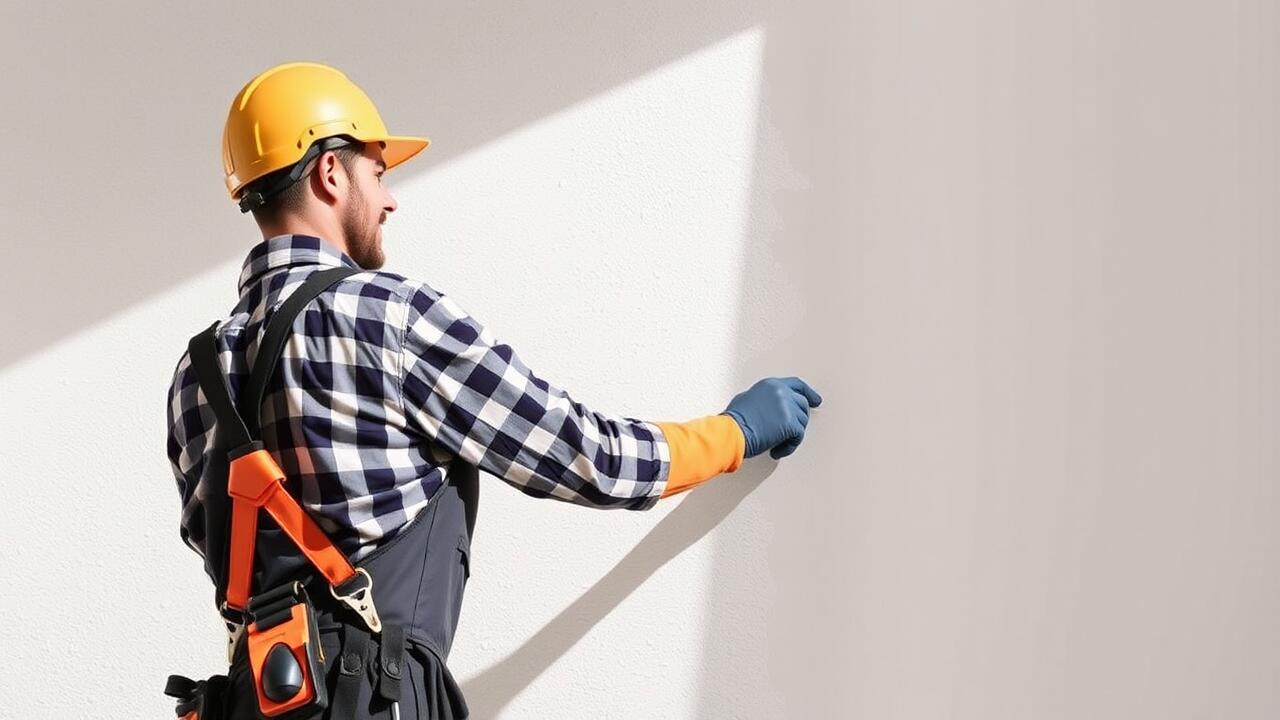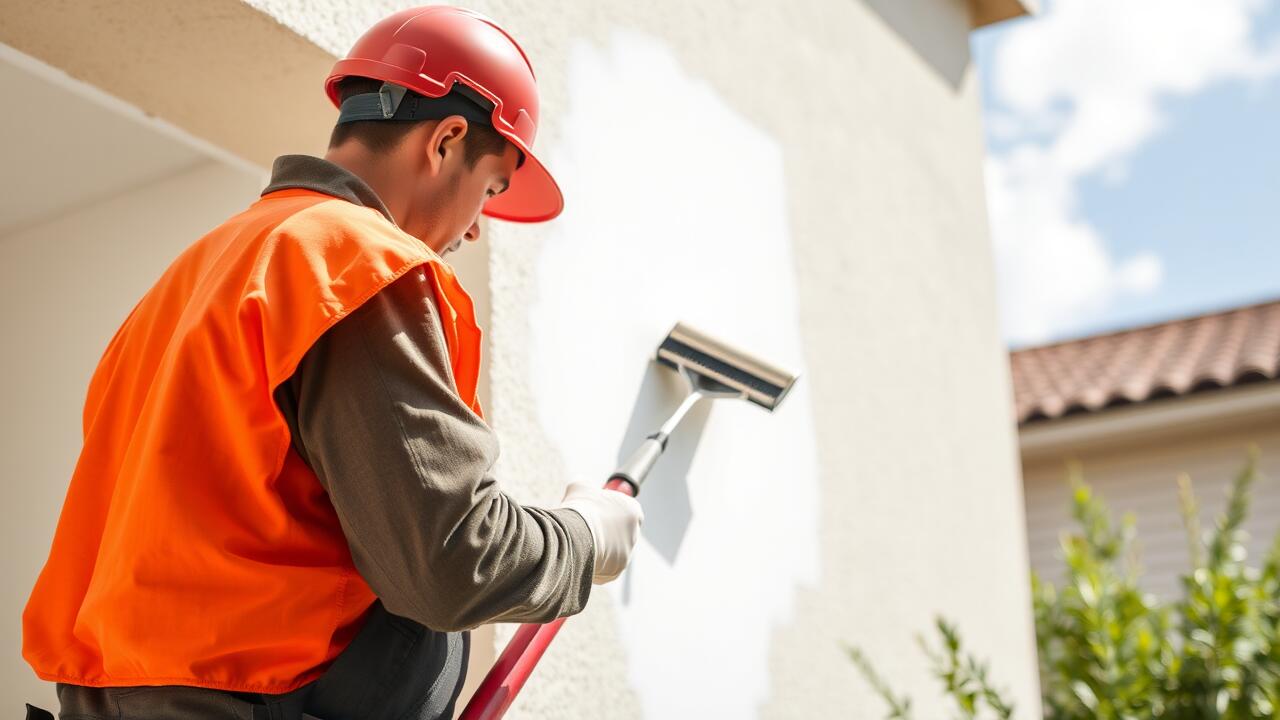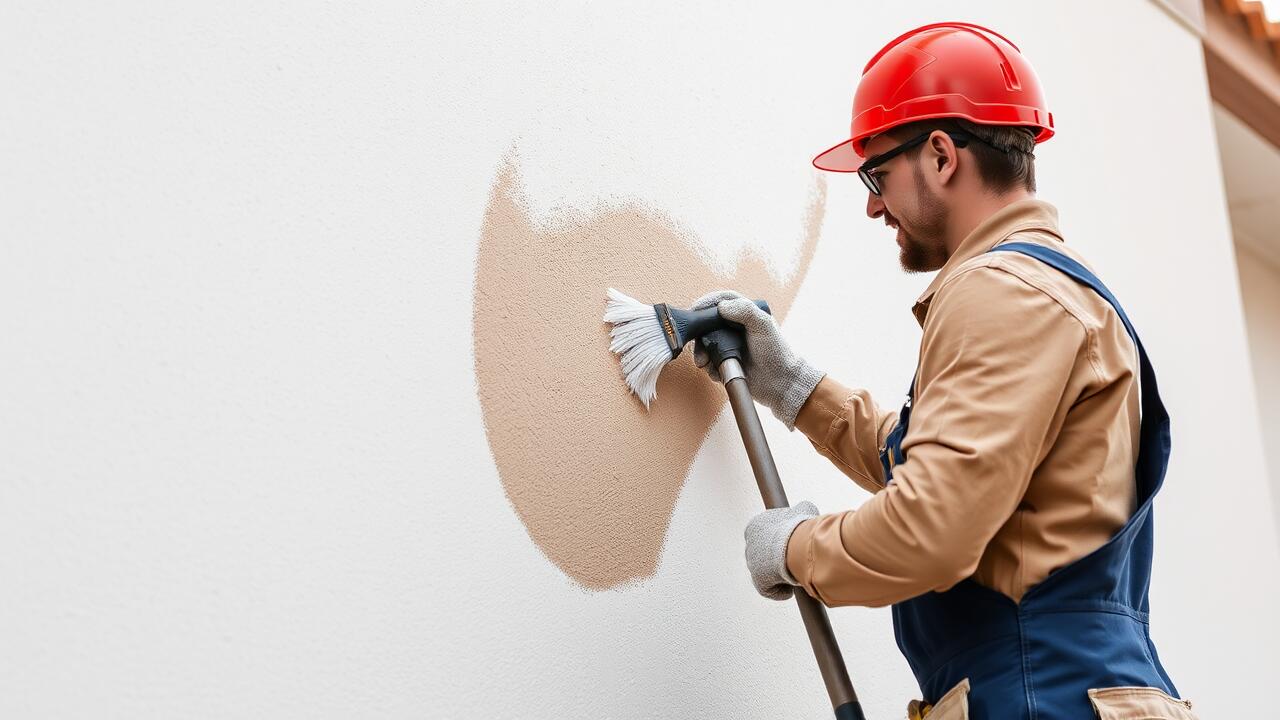
Texturing Techniques for Different Finishes
Different finishes can significantly influence the overall appearance of stucco. Techniques such as skip trowel, Santa Barbara, and dash finish offer unique textures to create desired aesthetics. Skip trowel involves applying a thin coat of stucco then troweling it to achieve a soft, textured surface. The Santa Barbara method provides a more rustic look, featuring a blend of troweled and fluffy textures. Dash finishes can introduce a lively look with small droplets of stucco projected onto the wall, resulting in a bold pattern.
Choosing the right texturing technique can enhance not only the beauty of a structure but also its durability. In areas like Highland Park, Los Angeles, where stucco painting is popular, selecting the appropriate finish becomes essential for both functionality and style. Proper preparation, along with a clear vision of the desired outcome, allows homeowners and contractors alike to make informed choices. Experimenting with different applications can lead to stunning results, making stucco a versatile choice for exterior design.
Exploring Popular Texture Styles
Stucco is a versatile material that allows for various texture styles, each offering a unique aesthetic. Common techniques include dash, skip trowel, and slap brush finishes. Each method creates a distinctive look, allowing homeowners to choose a style that complements their architectural design. Dash finishes provide a textured surface that can range from subtle to pronounced, while skip trowel finishes offer a smooth appearance with random texture variations. Slap brush techniques create raised patterns, adding depth and character to exterior walls.
For those in the Highland Park area of Los Angeles, opting for specialized stucco texture styles during the finishing process can significantly enhance curb appeal. Homeowners may wish to consider how the texture interacts with lighting throughout the day. A well-executed finish not only elevates the overall look but also improves durability, making it an essential aspect of any stucco project. When planning for stucco painting in Highland Park, Los Angeles, understanding these diverse texturing methods can facilitate a more informed decision, ultimately leading to a more satisfying result.
Mastering the Final Coat Application
The final coat of stucco application is crucial for achieving a polished look. It involves a careful process that begins with preparing the surface to ensure proper adhesion. Clean the area thoroughly and check for any imperfections that need repair. When applying the final coat, use a consistent technique to maintain even coverage across the surface. This step not only enhances aesthetics but also protects the underlying layers from moisture and weather damage.
For those considering a project in Stucco Painting Highland Park, Los Angeles, selecting the right tools plays a significant role in the quality of the finish. A trowel or spray equipment can produce varied textures, making it essential to choose based on the desired outcome. Applying the stucco in controlled amounts prevents excessive buildup and contributes to uniformity. Practicing technique and ensuring even pressure will lead to a more refined appearance that stands the test of time.
Key Tips for Achieving Uniformity
Achieving uniformity in stucco finishes requires careful attention to detail during the application process. Start by ensuring that the substrate is clean and free of debris. This provides a solid base for the stucco to adhere to effectively. When mixing stucco, follow the manufacturer’s guidelines to achieve the right consistency. Using the same materials throughout the project promotes a cohesive look. Additionally, consistency in technique while applying the stucco is crucial, whether you are using a trowel or spray method.
In an area like Stucco Painting Koreatown, Los Angeles, varying weather conditions can impact the finish. It is essential to monitor humidity and temperature levels before and during application. Regularly checking the thickness of the application ensures that there are no weak spots that could lead to uneven surfaces. Employing proper tools, such as a spray gun or a textured roller, also aids in achieving a more uniform appearance. Finally, conducting a thorough inspection after application helps identify areas that may need touch-ups, ensuring that the finished product meets high standards.
Curing Techniques for Optimal Results
Curing techniques play a crucial role in determining the durability and appearance of stucco finishes. Proper curing helps the material to achieve the desired hardness and adhesion while reducing the risk of cracks and imperfections. After applying stucco, it is essential to keep the surface moist for several days. This can be achieved through periodic misting with water or using curing blankets to retain moisture. For projects like Stucco Painting Highland Park, Los Angeles, ensuring optimal curing conditions can significantly enhance the overall quality of the finish.
Temperature and humidity levels can influence the curing process. In hotter climates, evaporation occurs quickly, which may necessitate more frequent moisture application. Conversely, cooler conditions can slow down the curing time, requiring additional attention to ensure the stucco sets properly. Monitoring the weather and adjusting curing techniques accordingly will promote a robust and resilient finish. Careful consideration of these factors is particularly important in diverse environments such as those found in Los Angeles, where conditions can vary widely.
Importance of Adequate Curing Time
Curing time is a critical factor in achieving the desired finish and durability of stucco applications. Proper curing allows the material to dry slowly and evenly. This process minimizes the risk of cracks and other imperfections that can mar the surface. In areas like Highland Park, Los Angeles, where the climate can be quite variable, understanding and implementing adequate curing techniques becomes essential for maintaining the integrity of the stucco.
In addition to preventing defects, proper curing affects the adhesion of subsequent layers such as paint or sealant. For homeowners in Highland Park considering stucco painting, timing their efforts to align with the drying schedule is crucial. Ensuring that the stucco has fully cured will lead to better results and a longer-lasting finish, enhancing both the aesthetic appeal and functionality of their property.
FAQS
What are some common texture styles for stucco finishes?
Some popular texture styles for stucco finishes include smooth, dash, skip trowel, and knockdown. Each style offers a unique aesthetic and can be chosen based on personal preference and architectural requirements.
How do I ensure an even finish when applying stucco?
To achieve an even finish, it's crucial to apply the stucco in consistent layers, use the right tools for the desired texture, and maintain a steady hand while working. Additionally, practicing your technique on a small area can help refine your skills.
What is the importance of curing time in stucco application?
Adequate curing time is essential for ensuring that the stucco adheres properly and achieves its intended strength. Proper curing helps to prevent cracking and enhances the longevity of the finish.
What are some key tips for achieving uniformity in stucco application?
Key tips include using quality materials, keeping the application area consistent in terms of temperature and humidity, and ensuring that all layers are applied evenly and at the same thickness.
Can I texture stucco myself, or should I hire a professional?
While it's possible to texture stucco yourself with the right tools and techniques, hiring a professional can help ensure a flawless finish, especially for more complex textures. If you're inexperienced, it may be beneficial to consult or hire a skilled contractor.



